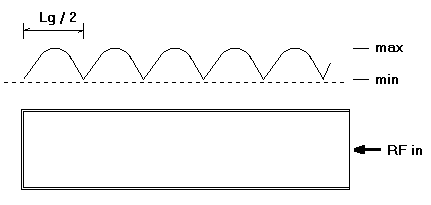Nu börjar det bli spännande ... Skickade ett mail till.. Dr Mosa Ali Abu Rgheff som jobbar på Plymoth universitet.. Hans expertområde är
Communications - Mobile
Computer Networks - Wireless
Computer Networks - Vehicular Ad-Hoc
Computer Networks - 4G
Cognitive Radio Systems
Computer Networks - LTE Systems
Kan inte han svara på frågan så blir jag mycket förvånad
--------------------------
Hi Dr Mosa, my name is Svenne and I live in Sweden
I'm working on a small website, about the cylindrical waveguide (also called cantenna, which comes from the word Can Antenna)
(Sorry its i written in swedish)
http://www.cantennabygge.n.nu/
I am looking for some theory that explains how a "front collector" works when it comes in contact with the wave. (WiFi 2,4Ghz band)
Let me explain ..
A pringelscan, is the case in which the most commonly used, are little too small to work optimally. Furthermore is 3/4 of a wavelength in a pringelscan 257.55 mm which is probably a few millimeters just outside the can. There Is two ways to solve this problem, the scandinavian way (two cans) or the American way, which means a "front-collector" who mistakenly called "Yagi antenna" in many circles. I have searched theory on Internet, but still has not find any, Just how you make it.
I find that the recommended distance between the tiles in the "front collector" is a quarter wavelength. When I count on the calculator it becomes 300,000 / 2.4 million = 0.125 m that is wavelength at 2400 MHz is 125 mm. A quarter of it is about 31 mm. So it does quite well.
BUT!
In the case of waveguides, completely different rules apply! Inside the waveguide the wavelength considerably longer. Typical values I've seen seems to be 1.5 to 3 times the wavelength in air. Radio waves is therefore much faster inside the waveguide than outside. (They are much faster than the speed of light which is interesting, but I'm not the man to explain how this can happen).
What I seek is someone who can explain how waves behave when it makes contact with the "front collector." and if it really solves the problem with 3/4 wavelength..
I am a bit skeptical about the function of a front collector, and have a suspicion that it would actually be less effective
Sorry about my bad English
Regards /
Svenne
------------------


